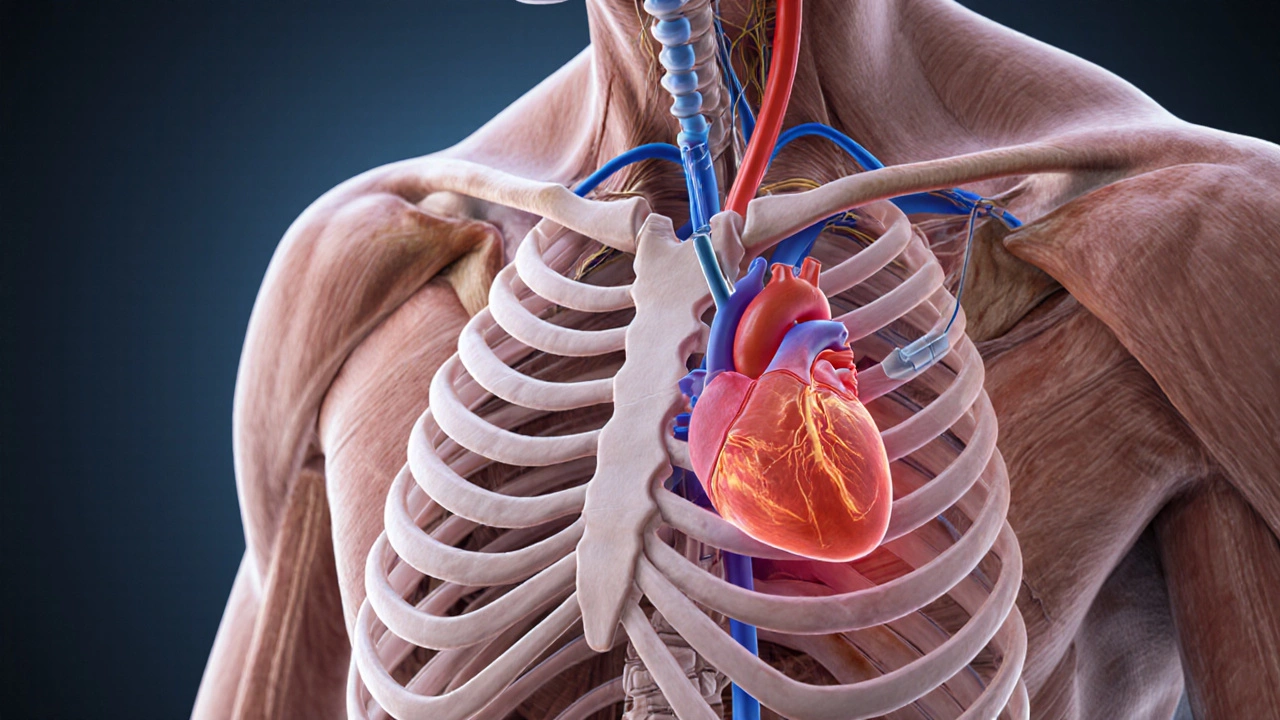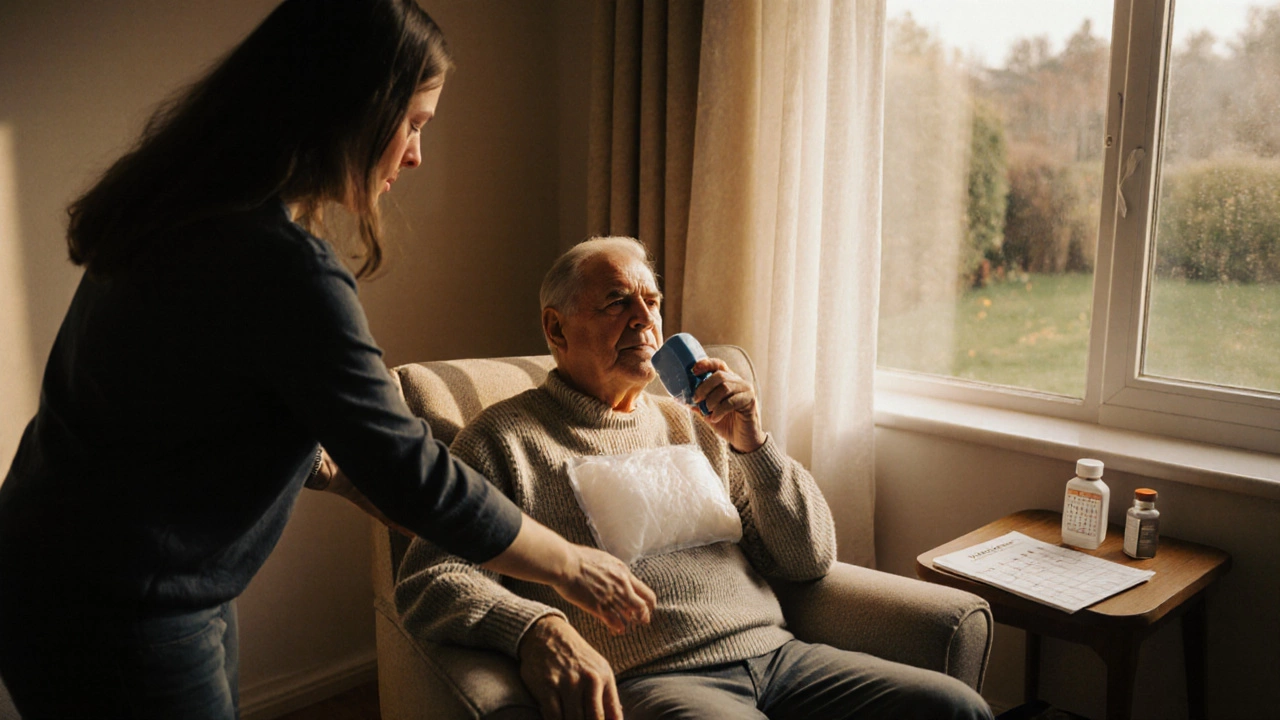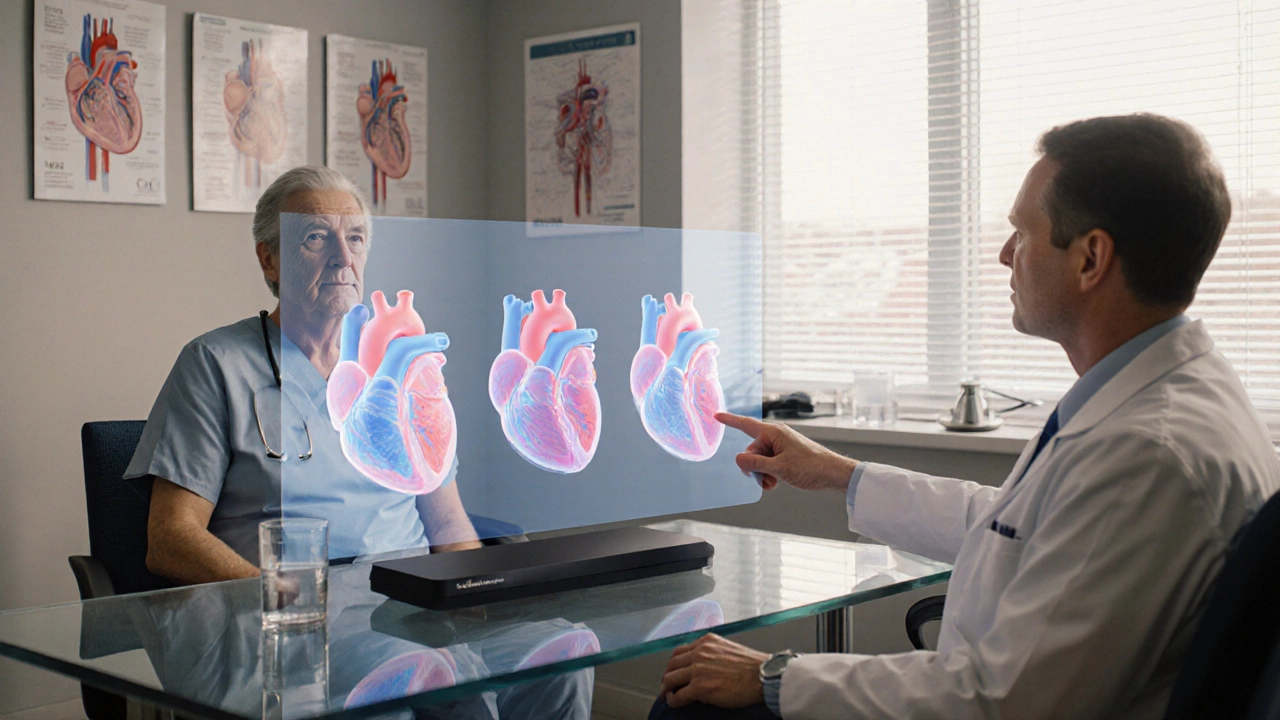Heart Surgery Pain Estimator
How Painful is Your Surgery?
Select your surgery type to estimate expected pain level and see recovery comparison.
Heart surgery is a series of procedures that repair or replace damaged heart tissue. Whether it’s a coronary artery bypass graft (CABG) or a valve replacement, most patients wonder: how painful is heart surgery? The short answer is that pain varies widely, but modern techniques and pain‑relief strategies keep discomfort manageable for most people.
Key Takeaways
- Open‑heart surgery typically scores 6‑8 on a 10‑point pain scale, while minimally invasive and transcatheter methods average 3‑5.
- Most pain comes from the incision, rib spreading, and inflammation, not the heart itself.
- Effective pain control combines short‑acting opioids, non‑opioid analgesics, and regional techniques like epidural analgesia.
- Recovery timelines differ: hospital stay 5‑7 days for open surgery, 2‑4 days for minimally invasive, and often outpatient for transcatheter procedures.
- Early mobilization, breathing exercises, and communication with your care team speed up healing and reduce lingering discomfort.
Types of Heart Surgery and Typical Pain Levels
Not all heart surgeries are created equal. Below is a quick look at the most common approaches and what patients usually report about pain.
| Procedure | Invasiveness | Typical Pain Level (1‑10) | Average Hospital Stay | Common Analgesia |
|---|---|---|---|---|
| Open‑heart surgery (e.g., CABG, valve replacement) | High - sternum cut, rib spreading | 6‑8 | 5‑7 days | IV opioids, NSAIDs, epidural (optional) |
| Minimally invasive cardiac surgery (mini‑sternotomy, thoracoscopic) | Medium - smaller incision, limited rib spread | 3‑5 | 2‑4 days | Oral opioids, NSAIDs, nerve blocks |
| Transcatheter procedures (TAVR, MitraClip) | Low - catheter through groin or wrist | 1‑3 | Same‑day to 2 days | Oral analgesics, occasional IV meds |
Why You Feel Pain After Heart Surgery
Understanding the source of discomfort helps you prepare for it. Pain usually stems from three main factors:
- Incision and sternum split - Cutting through bone and tissue triggers the body’s nociceptors, which send pain signals to the brain.
- Rib spreading or chest wall manipulation - Even with minimally invasive tools, ribs are pressured, causing muscle strain and bruising.
- Inflammatory response - The body releases cytokines to heal, and that inflammation can irritate nerves around the surgical site.
The heart itself has few pain receptors, so you won’t feel the organ being worked on. Most postoperative soreness is localized to the chest wall.

Factors That Change How Bad It Hurts
Every patient’s experience is unique. Here are the biggest variables:
- Age and overall health - Younger patients often heal faster, while older adults may have slower tissue recovery.
- Type of anesthesia - General anesthesia masks pain during the operation, but the choice of agents can affect how quickly you regain sensation.
- Pre‑operative pain tolerance - People who regularly manage chronic pain may report lower scores.
- Use of regional techniques - Epidural analgesia or paravertebral blocks can cut pain scores by up to 50%.
- Post‑surgical medication plan - Balanced regimens of opioids, NSAIDs, and acetaminophen prevent spikes in discomfort.
How Pain Is Managed - From Hospital to Home
Modern cardiac teams adopt a multimodal approach. Below are the most common tools:
| Method | How It Works | Typical Use |
|---|---|---|
| IV Opioid Analgesics (e.g., morphine, fentanyl) | Bind to opioid receptors, reducing pain signal intensity. | First 24‑48hours, especially after open‑heart surgery. |
| Non‑opioid Analgesics (NSAIDs, acetaminophen) | Decrease inflammation and block pain pathways. | Throughout hospital stay, often combined with opioids. |
| Epidural Analgesia | Delivers local anesthetic directly around spinal nerves. | Selected patients for open procedures; reduces opioid need. |
| Peripheral Nerve Blocks | Target specific chest nerves to numb the area. | Minimally invasive cases; lasts 12‑24hours. |
| Ice Packs & Gentle Compression | Reduce swelling and soothe superficial tissue. | First few days post‑op. |
| Breathing & Coughing Exercises | Prevent lung complications and improve oxygen flow. | Every 2‑3hours; also eases chest discomfort. |
Day‑by‑Day Recovery Timeline
Here’s a realistic snapshot of what you might feel in the first two weeks.
- Day 0‑1 (ICU): You’ll be on a ventilator for a few hours, then wake up with a sore sternum. Pain scores usually 6‑8 for open surgery, 4‑5 for minimally invasive.
- Day 2‑3: IV pain meds transition to oral pills. You’ll start gentle sitting up, walking a short distance, and doing deep‑breathing exercises.
- Day 4‑6: Most patients are transferred out of ICU. The chest wall feels less “tight,” but you may still notice sharp twinges when coughing.
- Day 7‑10: Discharge planning begins. Pain usually drops to 3‑4, and you’ll be instructed on home medication schedule and activity limits.
- Week 2‑4: Follow‑up appointments focus on wound healing and adjusting meds. Light activity, such as short walks, is encouraged.
The first month is critical. Staying on schedule with cardiac rehabilitation programs dramatically reduces lingering discomfort and speeds full recovery.

Real Patient Stories - What They Said About Pain
Ravi, 58, Bangalore - Open‑heart bypass: “The first three days were the toughest. The sternum felt like a split wood, but the epidural left me almost pain‑free. By day five, I could sit up without wincing.”
Meera, 45, Delhi - Mini‑sternotomy valve replacement: “I was surprised how small the incision was. I felt sore for a week, but the nerve block meant I hardly needed any pills.”
John, 70, New York - TAVR (transcatheter aortic valve replacement): “I was out of the hospital in two days. The only ache was a mild bruise at the catheter site. No strong pain meds were needed.”
Preparing for Your Surgery - Questions to Ask Your Surgeon
- What type of incision will I have and why?
- Will I receive an epidural or nerve block?
- What is the planned medication schedule for the first 48hours?
- How soon can I start breathing exercises and walking?
- What signs of pain or infection should prompt a call to the hospital?
Having clear answers reduces anxiety and lets you focus on healing rather than guessing.
Frequently Asked Questions
Is heart surgery the most painful surgery?
No. Orthopedic procedures like joint replacements or spinal fusion often score higher on pain scales. Heart surgery pain is significant but well‑controlled with modern analgesic protocols.
Can I avoid opioids after heart surgery?
In many cases, especially with minimally invasive techniques, doctors can rely on NSAIDs, acetaminophen, and regional blocks to keep opioids minimal. Discuss a opioid‑sparing plan before surgery.
How long does the chest wound stay sore?
Most patients notice a noticeable reduction after the first week. Full resolution of tenderness can take 4‑6 weeks, especially after a sternotomy.
Will the pain affect my ability to work?
Depends on the job. Sedentary work can often resume 2‑4 weeks after a minimally invasive procedure. Heavy‑lifting or physically demanding roles may require 8‑12 weeks.
What are the warning signs of uncontrolled pain?
Increasing pain despite medication, fever, redness at the incision, or difficulty breathing are red flags. Contact your care team immediately if any appear.

 Which Bone Never Heals? The Surprising Truth About the Hyoid Bone
Which Bone Never Heals? The Surprising Truth About the Hyoid Bone
 What’s Taking Over from Metformin in Diabetes Care?
What’s Taking Over from Metformin in Diabetes Care?
 What Is the Number 1 Unhealthy Food in the World?
What Is the Number 1 Unhealthy Food in the World?
 Does Medicare Cover You If You Travel Overseas? Know Before You Go
Does Medicare Cover You If You Travel Overseas? Know Before You Go
 How to Drop 20 Pounds Fast Without Losing Your Mind
How to Drop 20 Pounds Fast Without Losing Your Mind